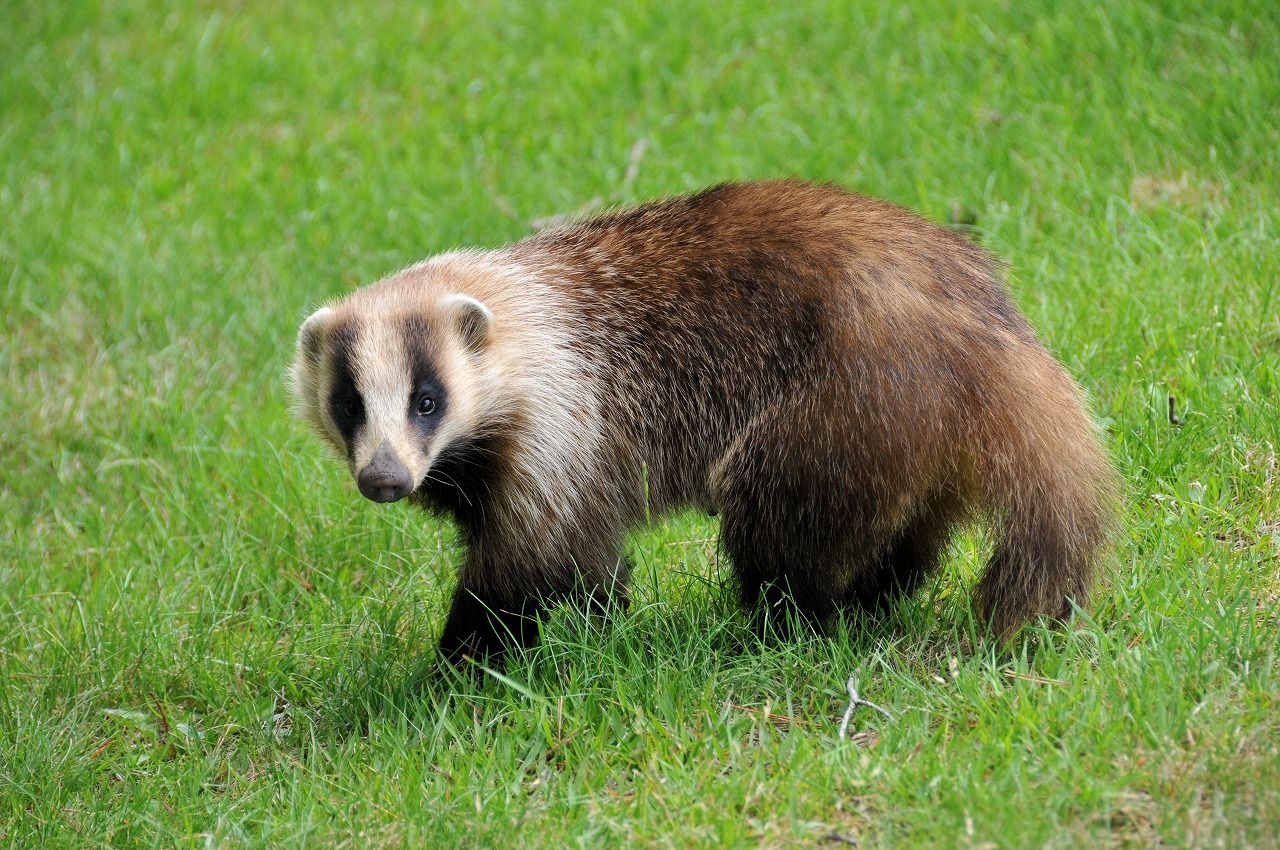
The Elusive Forest Dweller: Unveiling the Charms of the Japanese Badger
When you think of Japan’s incredible wildlife, images of internet famous snow monkeys, majestic sika deer, or perhaps the tanuki of lore might first come to mind. But nestled within the country’s diverse landscapes is another fascinating creature often overlooked: the Japanese badger, Meles anakuma.
While closely related to its European and Asian badger cousins, the Japanese badger is an endemic species, meaning it’s found nowhere else in the world. It carries the familiar badger silhouette – a stocky body, short legs, and a powerful build – but with its own unique characteristics and a story tied intimately to the Japanese archipelago.
A Familiar Face, But Uniquely Japanese
At first glance, the Japanese badger might resemble its European relative (Meles meles) with its distinctive facial stripes. However, there are subtle differences. Japanese badgers tend to be a bit smaller and lighter in build, with shorter claws on their forefeet. Their fur is often a more uniform grayish-brown over much of their body, with less contrast in the facial stripes, which can appear more brownish than stark black.
These nocturnal creatures are found across most of Japan’s main islands, including Honshu, Kyushu, Shikoku, and Shodoshima. They prefer wooded areas, forests, and hilly regions, often in close proximity to agricultural land, showcasing their adaptability to both wild and semi-developed environments.
Masters of the Underground: Their Elaborate Setts
Like all badgers, Japanese badgers are expert excavators. They construct intricate underground burrow systems known as “setts.” These subterranean networks can be incredibly complex, featuring multiple entrances, tunnels, and chambers that serve as living quarters, nurseries, and safe havens from predators or harsh weather.
A badger sett isn’t just a hole in the ground; it’s a home passed down through generations, often expanded and maintained by family groups. The presence of a sett is a sure sign of badger activity in an area.
What’s for Dinner? An Omnivore’s Delight
The Japanese badger is a prime example of an opportunistic omnivore. Their diet is incredibly varied, shifting with the seasons and the availability of food sources in their habitat. Their powerful digging claws are perfect for unearthing many of their preferred meals:
- Earthworms: A staple, especially after rain.
- Insects and Larvae: Beetles, grubs, and other creepy crawlies are a significant part of their diet.
- Fruits and Berries: They readily consume a wide range of seasonal fruits like persimmons, grapes, and various berries.
- Nuts and Roots: Acorns, chestnuts, and other plant matter provide essential nutrients.
- Small Animals: Rodents, frogs, and reptiles might also be prey, particularly when other food sources are scarce.
This diverse diet allows them to thrive in various Japanese ecosystems, from dense forests to the edges of farmlands.
Behavior and Conservation Status
Japanese badgers are primarily solitary, though family groups can sometimes be observed sharing a sett, especially during the breeding season or when raising young. Cubs are typically born in late winter or early spring, remaining in the sett for several weeks before venturing out with their mother.
While the Japanese badger is currently classified as “Least Concern” by the IUCN, like many wildlife species, they face ongoing challenges. Habitat fragmentation due to urbanization and development, road accidents, and conflicts with agriculture (where they might raid crops) are all threats. Historically, they were also hunted for their meat and fur, though this practice has significantly declined.
Understanding and protecting these elusive and fascinating creatures is crucial for maintaining the biodiversity of Japan’s unique natural heritage. The Japanese badger, with its quiet life in the forests and its ancient connection to the land, remains an integral, if often unseen, part of Japan’s wild heart.
More photos below ↓




Disclaimer: This blog post is for edutainment purposes only and may not be entirely accurate.






